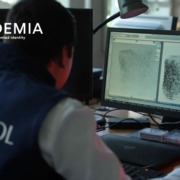The recent report from HID Global highlights the latest trends in physical access control. With the rapid evolution of technologies, companies need to rethink their security to meet new demands. This article explores the main findings of the report and the implications for businesses.
New trends in access control
According to the HID report, the adoption of cloud-based access control solutions is rapidly expanding. These solutions offer increased flexibility and allow companies to manage their security remotely. This trend is particularly evident in large organizations seeking to centralize access management.
The growing use of biometric technologies is also a key point. Businesses are starting to understand the importance of securing access not only through cards or codes but also with more robust authentication methods like facial recognition or fingerprint scanning. These technologies reduce fraud risks and increase the accuracy of controls.
Challenges of evolving access control technologies
With the introduction of new technologies, new challenges emerge. One of the main obstacles is the integration of existing systems with more modern solutions. Many companies still have traditional security infrastructures that are not always compatible with new technologies. This can lead to additional costs and service interruptions during the transition.
Another challenge is data management. Modern access control systems collect a massive amount of data, and companies must be able to manage it efficiently. Protecting this data from cyberattacks is crucial, as any breach could compromise the physical security of facilities.
The future of access control: towards greater automation
The HID report also highlights the trend toward increased automation in access control systems. Artificial intelligence (AI) plays an increasingly important role in access management, with systems capable of making real-time decisions based on behavioral models. This automation not only strengthens security but also improves operational efficiency by reducing human errors.
Companies must anticipate these changes to stay at the forefront of security. This not only involves following technological trends but also training employees to use these new tools. By investing in cutting-edge technologies and adapting their security strategies, businesses can better protect their assets and ensure efficient physical access management.
Physical access control continues to evolve under the influence of new technologies. For companies, it is crucial to understand these changes and adapt quickly to maintain optimal security in an ever-changing environment.
Source: https://newsroom.hidglobal.com/fr/nouveau-rapport-de-hid-sur-letat-du-controle-dacces-physique



